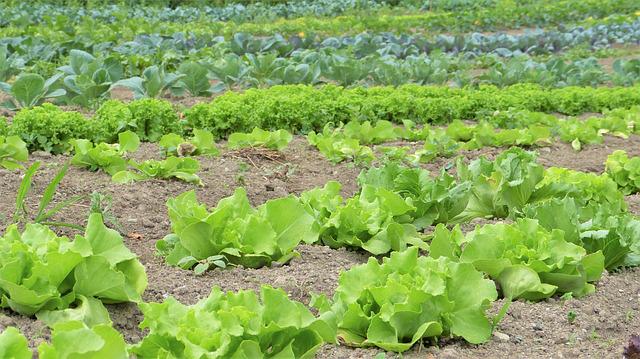I can’t decide which vegetables go where in my garden. Years past, I’ve chosen areas for various plants. Tomatoes all together in the best sun, everything in neat rows. But why?
While growing things has its roots (🤣) in sciences of botany and agriculture, there are sooo many variables, it’s difficult to be scientific about it. And by being scientific, I mean basing the planting location on established principles and practices.
This year, I’ve decided not to decide, and plant a bit of everything every where. This sounds wrong, in a cultivation of vegetables in the urban backyard kind of way. My inner rule-breaker has taken charge.
A bit about my backyard: Sunny areas in the centre are surrounded by mature trees. Soil is silty, a bit loamy. Frost leaves later in May and returns around the September/October boundary. The number of sunny days and rainy nights is suitable for growing seasonal veggies ranging from early leafy greens like spinach, to sun-loving fruits such as tomatoes and sweet peppers, and cooler climate root veggies like carrots, turnips and beets. Squash and beans are natural to the area, as are many berries.
Back to the dilemma at hand, I can’t remember why I ever felt the need to plant in rows and areas. It is the picture perfect postcard, but what’s that got to do with growing vegetables?

A few concepts I’ve used in the past to decide which plants go where:
- more light/less light. Some crops need more hours of direct sunlight than others, while others tolerate less light in exchange for lower temperatures and more water. Direct sunlight tends to be dehydrating. Peas, celery, rapini are ok with a bit of shade.
- temperature. I started growing sweet peppers and eggplant on my asphalt driveway (in pots) because they love the heat. Once I got a greenhouse, they moved in. There is no such thing as too hot for these veggies. Cucumbers are the same.
- pollinators. Some crops need them, some don’t. Squash and tomatoes don’t grow fruit without the bees nuzzling their flowers, transferring pollen for the miracle of fertilization. These crops don’t do well in the greenhouse or on a high-rise balcony.
- space to grow. Each seed packet provides the distance plants should be ‘thinned’ to and how far apart rows should be to produce the best yield, based on how big the plant will get (above and below ground). Some crops mature early (lettuce, spinach, radishes) while others need every last day of summer (Brussels sprouts, celery). This is a good argument for why to plant different plants together. As the early ones mature, space is made for those still growing.
While these considerations are important, they’re more about which part of the yard a plant should go in, rather than why plants of a kind should be together. More relevant:
- self-pollination. Some veggies make fruit when the wind transfers pollen from one to another, eg. corn needs to be down-wind of its kind.
- contaminated soil. Not oil spills or mine tailings. In the backyard ecosystem, certain diseases and pests cycle through the soil, so crop rotation can avoid things like early blight that yellows tomato leaves and curtails their fruiting, or flea beetles that eat pak choi leaves full of little holes. Moving vegetables as a group is a good thing.
- compatibility. We all have our own personal habits, ways we have developed that work for us. Given enough space, they are harmless. But sometimes close proximity to your neighbours brings out incompatibilities. Suppose the people next door enjoy smoking meat, which may be fine, until the wind carries the wood smoke into your open bedroom windows. Same for plants. Some get along as neighbours better than others1:
- The taller ones can overshadow the shorter. This can be a good thing, or a bad thing, depending on what the shaded plant prefers.
- Climbing/travelling plants wrap themselves around anything and everything, which isn’t always good. Squash can strangle beans, and climbing beans are not recommended around peppers, for the same reason.
- Some emit or extract chemicals into/from the soil that just don’t work for others.
Having run through all these important points about growing conditions for various vegetables in the backyard, I’m still searching for the reason why I need to plant all the plants of the same type together, in rows or areas. It is convenient and efficient for a number of tasks:
- planting rows is faster than than dotting seeds around the yard,
- harvest is quicker if many plants need to be visited,
- de-bugging requires less effort and insecticide if plants of a kind are all together,
- customization of watering and fertilizing is possible if species are together,
- seed planting – generally the location is marked, so they aren’t dug up before they sprout. And when they do, identifying weeds is simpler.
The more I read and think, the more complex this becomes. So many things to consider. Perhaps thousands of years of people cultivating crops has culminated in the knowledge that things grow better if planted in rows and areas. The challenge with doing things by convention is that it’s hard to know which part of the tradition is critically important and which might not apply to current circumstances.
The thing I do know about gardening is that each spring and summer vary in the temperature, rainfall and the pests they bring. Despite the reflection and research, I’m willing to take a risk and try something different. Maybe I’ll only prove to myself planting in rows is better or maybe I’ll learn something new. Stay tuned.
1 This is the whole basis to companion planting, which considers which plants, when co-cultivated, provide benefits in nutrients, temperature regulation, pest and disease avoidance. It does include ideas about which plants don’t grow together well, see for example: https://www.farmersalmanac.com/companion-planting-guide